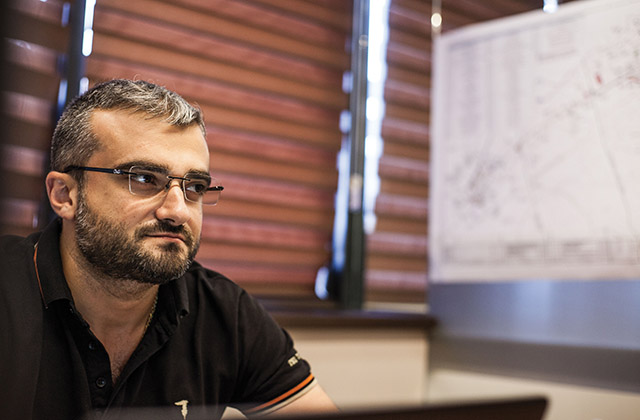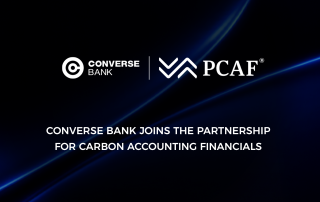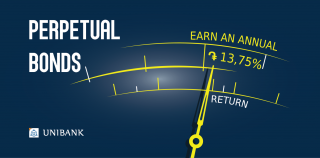
Armen Stepanyan: Spreading fears serves no good purpose

Interview with Director of Sustainability of Lydian Armenia CJSC
– Mr. Stepanyan, Amulsar Project is in its active construction phase and the gold production is expected to start next year. While in the past you were saying Lydian will apply best international practice, are there any tangible achievement in this regard you can mention?
– I believe there are. The difference in the quality of constructed roads and infrastructures is already visible for anyone who has ever seen a major construction and has anything to compare with. You can see the engineering solutions adopted from the best mining practice and advocated by us as a new approach in environmental management.
– Can you provide any specific examples?
– Sure, the pipes are being installed at the bottom of the barren rock storage facility and will be covered with a special protective layer to keep the waters segregated from the mine infrastructures and diversion channels are constructed to manage the rainfall and snowmelt flows. These are some of the measures aimed at protecting the surrounding water basins.
– Are these already visible now?
– Yes, there are some photos posted on our website and you can visit and see it if you apply to us in advance.
– The photos posted in social media sites show that the construction is proceeding extensively. Are there any challenges, or everything is easy to manage?
– Surely there are some challenges, it can’t be always perfect. This year we had a very dry summer season and there were some periods when the dust level was high. We had problems with some contractor construction companies in terms of compliance with our standards. Namely, I am speaking about the dust management measures to be applied and the timely use of water trucks. Sometimes we had to stop the operations for the contractors to apply relevant measures. There are problems, of course, but we are trying to fix them and improve as we advance.
– The first Sustainability Report has been issued this year. Your Company undertook commitment to transparently present the shortcomings as well. Has the dust problem been covered in the Report and what is the overall purpose of this Report?
– Sustainability Report is an important instrument of transparency and accountability in modern business ethics. The Report presents the progress on the environmental and social management, covering the reported year, and surely it reflects on shortcomings as well. It is important to mention, that we issued our first report at early stage of mine construction. This is a rare case and not only for Armenia. The issue with the dust has occurred this year and it will definitely be covered in the Sustainability Report for 2017 and we will also reflect on the solutions already applied.
– Your Company is often accused of downplaying the risks raised by environmental experts.
– First, I would like to clarify that “environmental expert” is a profession and it implies relevant academic knowledge or work experience. Most of the project critics have neither, as a rule. They are activists and concerned citizens who undoubtedly have the right to raise their concerns, but most of them are not environmental experts.
– Well, let them be activists. You are accused of stating that there will be no impacts.
– We have never stated there will be no impacts. All human activities, starting from urban development and ending with tourism, imply impacts. What we are saying is that the impacts are manageable, as it is done at hundreds of mines all over the world. The frequently-mentioned “impacts” can be definitely avoided. Namely, there will be no impact neither on Lake Sevan nor Jermuk water springs or on the health of the community residents. This is for certain. But there will be other impacts: we will have huge open pits, large infrastructure all over the place, of course there will be impacts, for example on the landscape. We have published more than 5 thousand pages of research with all the possible impacts assessed and mitigation measures described.
– Does the research refer to the acid rock drainage, that was studied by a team of international experts?
– Another clarification: no study was conducted by the experts you refer to at Amulsar. These experts provided comments on parts of our research. Thus, yes, there are hundreds of pages covering this issue in our public documents.
– Then, what are the new risks raised by the activists?
– Hundreds of pages in the Amulsar Environmental and Social Impact Aseesment that was disclosed a few years ago, refer to the acid rock drainage. And the issue was not supposed to be a revelation for anybody who had read the publicly available ESIA. I want to mention that the acid rock drainage is a major issue common for all the mining projects, including those in Armenia. Had you ever heard of this problem before?
– The first time I have heard about it was this year and in relation to Amulsar mine.
– Well, that is the issue. Acid rock drainage is not a new problem for mining. Local mines in Armenia often provide no solution to this issue. But this is a solvable issue and modern mines apply solutions I have mentioned before, for example water management and treatment systems. Considerable investments have been made by Amulsar Project to find and apply relevant up-to-date solutions. Notwithstanding the fact the acid rock drainage is a novelty for some, the solutions already applied by Amulsar Project may be used by other mines as there now is a good example being implemented.
– There were other issues raised with respect to Amulsar…
– There is an interesting trend observed in the history of Amulsar project critique. A few years ago, one could often hear statements that there is uranium at Amulsar that will result in uranium pollution of the region. When was the last time you heard about this?
– I think I haven’t heard about it for long.
– Yes. I assume after consulting with some experts, there is an understanding among the activists now that there is no such issue and the topic is not on the agenda any more. The next one was cyanide. We kept hearing that the cyanide will spread all over the area and will even reach Sevan. Once again it took a few years for many of the critics to admit that cyanide is expensive by itself and will also contain the extracted gold and it would be at least irrational to assume that the cyanide will flood the area. You may see that this is another topic that is fading slowly. Or, we kept hearing that the village residents will be forced to sell their land and the Company will pay pennies for it. We conducted land acquisition from over 150 landowners around Gndevaz without a single court dispute. I think this is an unprecedented case in Armenia and rare in international practice and this shows the level of trust towards the Company. Now the same tone is applied to the “new” topic- acid rock drainage, with statements out there implying that it is an unmanageable issue. I believe, it will take some time for most of the critics to see that this problem is also solvable like all the others.
– But the acid drainage has been highlighted by international experts as well.
– There is nothing in the international experts’ conclusions stating that acid drainage is not manageable per se. With all due respect to all the experts I must say that the studies, which we are guided by and which contain dozens of volumes and thousands of pages, were also carried out by independent, international reputable experts who had been conducting surveys and field research and detailed analyses for many years at Amulsar. The experts you refer to based their conclusions on these studies. Some of their recommendations are even acceptable for us as they coincide with our planned measures and should be implemented in due time according to our designed and approved programs. But there are some other conclusions that we may not agree with. We can see that the experts had a limited information when making these conclusions. All our documents are public and they are very voluminous. The fact that there are misunderstandings in their conclusions is not surprising as we believe mistakes may occur when working with volumes of research, thousands of miles away from the actual mine site. But even so, the experts you refer to, do not exclude the possibility of management of acid drainage. They may be suggesting additional surveys and measures. The full response to their concerns was given by independent international experts, who worked on the Amulsar ESIA, and who also provided specific examples of successful management of acid drainage worldwide.
– Thus, you state that the acid drainage is a manageable?
-Definitely so. Amulsar deposit is oxidized and no scientist can deny this. Thus, the acid drainage problem may exist within the barren rock storage facility area, mainly and partly at the open pits. This problem can be solved by implementing relevant measures at construction phase and by water management during the operations, as well as by installing rehabilitation and long-term treatment systems in future.
– Are these methods applied in developed countries?
Yes. Those methods have not been invented by Lydian. These systems are successfully implemented at new mines constructed from Canada to Sweden. Mining shall continue both in Armenia and in the rest of the world, with the environmental management measures improving constantly. It is in everybody’s interest to bring this experience to Armenia. I can fully understand the skepticism of activists. We are ready to continue the dialogue. If there are omissions that are grounded and based on facts, we will be happy to be shown and fix those. But it is not possible to fix the issues in the mining industry if the criticism is not factual. Spreading groundless fears serves no good purpose.
By Sargis Ghazaryan























